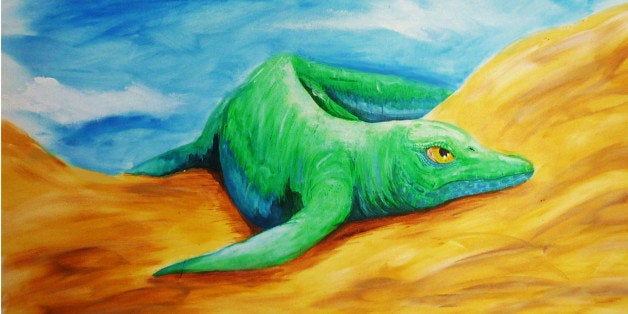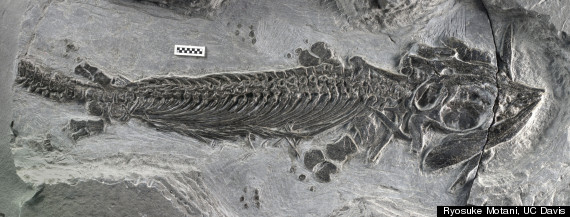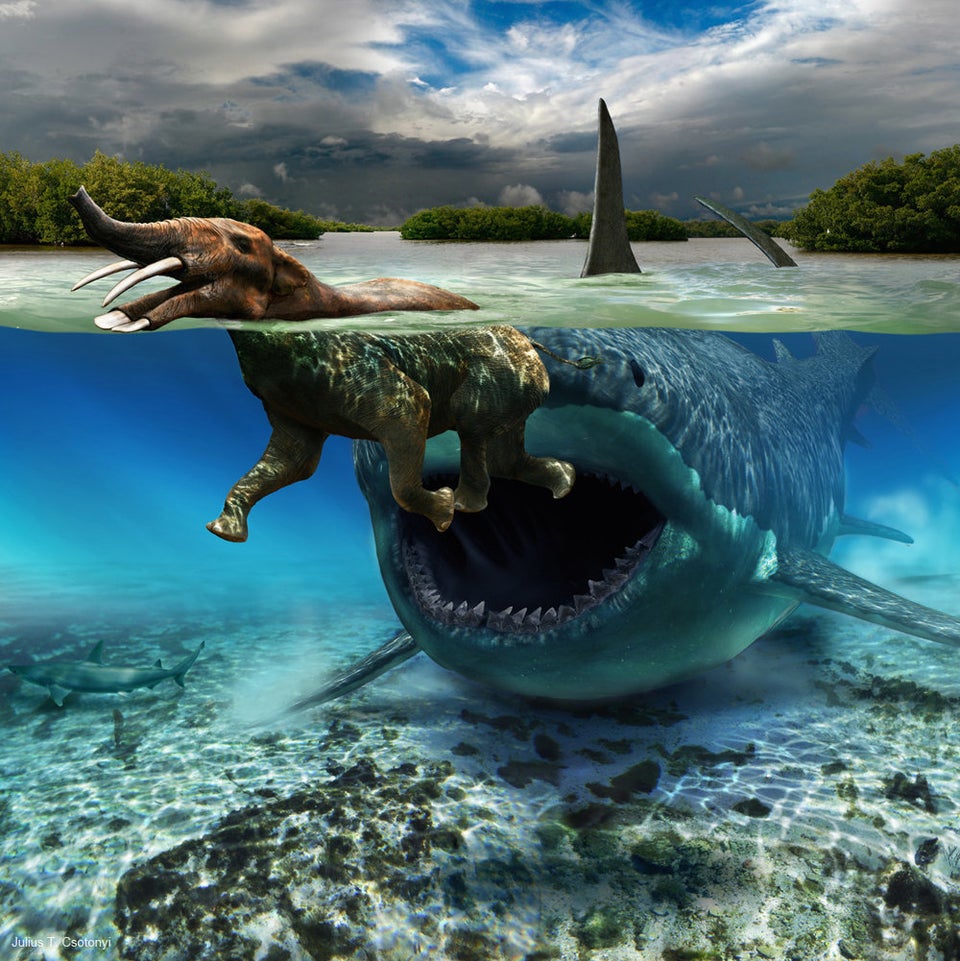
The first fossil of an amphibious ichthyosaur has been discovered in China, and the scientists who made the discovery say it fills a longstanding gap in the fossil record.
Paleontologists have long known that ichthyosaurs--dolphin-like "sea monsters" that lived from about 250 million years ago until about 90 million years ago--descended from similar reptiles that lived on land. But there was no fossil showing a transitional creature adapted for life on land as well as in water.
"But now we have this fossil showing the transition," Dr. Ryosuke Motani, a professor in the department of earth and planetary sciences at the University of California, Davis, and a member of the international team of scientists who made the discovery, said in a written statement. "There's nothing that prevents it from coming onto land."
(Story continues below image.)
Fossil remains show the amphibious ichthyosaur found in China. The animal had large flippers and flexible wrists, which enabled it to walk.
Motani and his colleagues found the 248-million-year-old fossil in China's Anhui Province, according to the statement. The fossil measures about 1.5 feet in length and shows an animal with large, flexible flippers that would have made it possible to walk on land.
Ichthyosaurs fully adapted for aquatic life didn't have such flippers. And while fully aquatic ichthyosaurs had long, beak-like snouts, the fossil shows a short snout similar to the ones commonly seen in terrestrial reptiles.
Based on its anatomy, the amphibious ichthyosaur (known as Cartorhynchus lenticarpus) probably wasn't a fast swimmer, Motani told National Geographic. Instead, it probably rooted around for bottom-dwelling prey like shrimp in what was then an island-filled area of the ocean.
If the fossil is the first of its kind to be found, it probably won't be the last to reveal new insights into ichthyosaurs.
"There are more ancestral forms [of ichthyosaurs] still to be found,” Dr. Valentin Fischer, a vertebrate paleontologist at the University of Liège in Belgium who wasn’t involved in the discovery, told Science.
The team included scientists from the Anhui Geological Museum, the Chinese Academy of Science, the University of Milan, and The Field Museum in Chicago in addition to the University of California, Davis, and Peking University.
A paper describing the fossil was published online Nov. 5 in the journal Nature.

